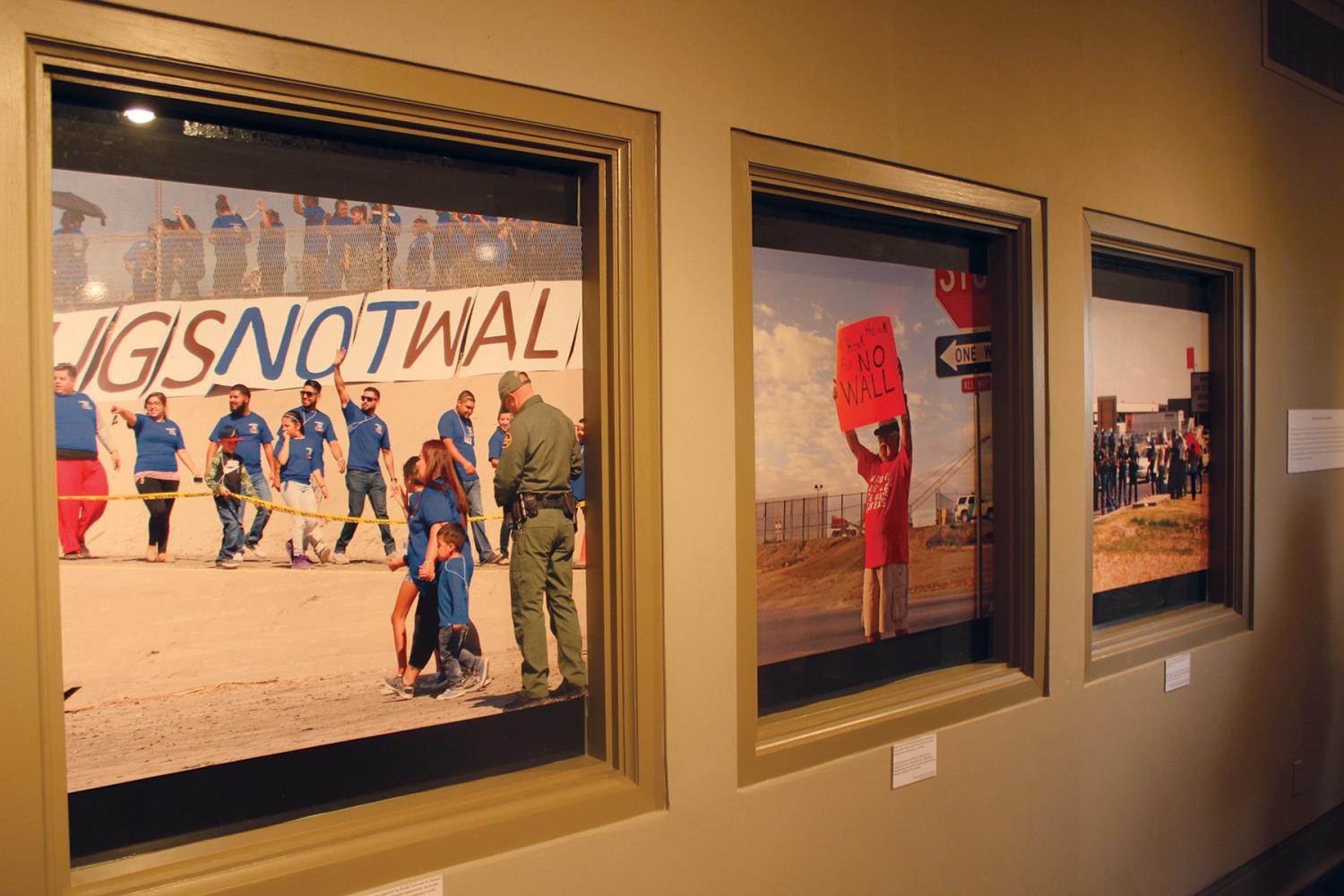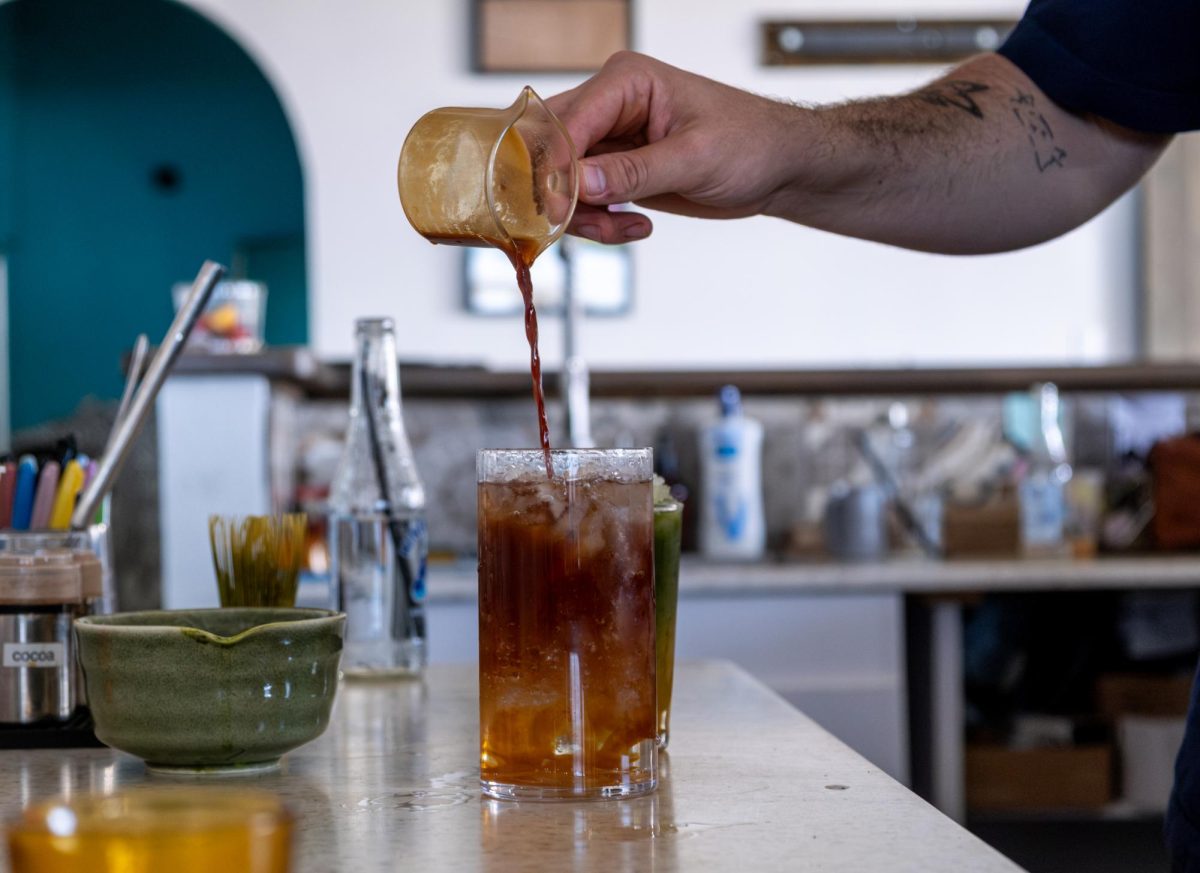Two new art exhibits, “Bracero Memories” and “La Frontera: A Century of Division and Resistance,” opened over the weekend at the Centennial Museum.
Both exhibits feature photographs, local artwork, artifacts, and oral history. While both exhibits tell the border’s story, each exhibit explores a different topic. “Bracero Memories” dives into the Bracero Program, while “La Frontera” focuses on immigration.
“Bracero Memories” explores the long and complex history of the Bracero Program, a program that brought millions of Mexican guest workers to the United States.
It was a collaboration between the U.S. government and the Mexican government that allowed Mexican citizens to work in the U.S. from 1942 to 1964 due to the labor shortages that were caused during World War II. The exhibit is commemorating the program’s 75th anniversary.
“We actually did a bracero exhibit a little over a decade ago,” said museum Director Daniel Carey-Whalen. “We had the exhibit in the basement and we had people constantly saying that was a great exhibit, ‘We’d like you to bring it back,’ and now with the 75th anniversary, we thought ‘well this is the time to bring it back.’”
This exhibit will be different from the previous one, as it focuses on how the city and county of El Paso were involved in the Bracero Program as a whole.
The Center for Border Farmworkers collaborated with the museum organizers to add serval unique artifacts that tell the stories of “braceros” who made their way through the borderland.
“[The Center for Border Farmworkers] have a huge archive. I think it’s over 30,000 documents and they’re loaning us a small portion, a couple dozen artifacts and documents,” Carey-Whalen said.
After the Bracero Program ended, the H-2B visa nonimmigrant program started. It allows employers to hire foreign workers to come work in the U.S. temporarily.
“If you even thought the program ended in 1964, it’s still going on right now,” Carey-Whalen said. “If you go down at three o’clock in the morning to the [Center for Border Farmworkers] they’re picking up farm workers who are Mexican nationals, most of them, and they’re taking them out to the fields up in Hatch, New Mexico, and they’re picking our fruits and vegetables today.”
“Bracero Memories” is a timely exhibit, as the National Trust for Historic Preservation will host the Bracero History Summit at UTEP on Sept. 22 through 23. The National Trust is partnering with the university as well as the Smithsonian Institute, the City of Socorro and Latinos in Heritage Conversation to put on this summit.
The summit will conclude at the Rio Vista Farm in Socorro, which is the last remaining bracero processing center in the United States.
“La Frontera: A Century of Division and Resistance” explores the border over the past 100 years. The exhibit addresses the “hardening” of the border since one of the first immigration acts was passed in 1917. The exhibit goes in-depth into why and how the border has progressed and digressed throughout the century.
The exhibit is being curated by the Department of History’s public history interns. The project started as a class of half a dozen students taught by history Professor Yolanda Leyva during the spring of 2017. Doctoral student and curator Angelina Martinez said that each of the students did extensive research and even brought in personal items belonging to their families to showcase.
Before the Immigration Act of 1917 that imposed a head tax and a literacy test on immigrants, the border was easy to cross and allowed people and businesses to move back and forth easily.
“La Frontera is a timely exhibit considering the rhetoric that’s going on right now and how people view and interpret the border fence and border division,” Martinez said.
While the exhibit shows how people who have lived and live along the border have been affected by government policies and legislation, it also focuses on how the community can bounce back from all the negative stigmas and stereotypes.
“We were in a way trying to reinsert a little bit ‘cariño’ into our community and say, ‘you know we do belong here, we do belong here in this country,’ and while some people or some rhetoric going on may insinuate that we don’t, we have a place here and we can keep that place and we have kept that place for many years,” Martinez said.
The exhibits opened on Sept. 16, which is also Mexico’s Independence Day. Carey-Whalen said it was “totally planned.”
“I think that it’s cool that we get to celebrate two independence days in this city. Not very many places in the country get to do that,” he said. “We’re trying to tell [the bracero’s and border’s] story and we think it’s appropriate to have [the exhibits] open on Mexican Independence Day.”
“Bracero Memories” and “La Frontera: A Century of Division and Resistance,” will run until Dec. 16. The UTEP Centennial Museum is located on the corner of University Avenue and Wiggins Road and are open Tuesday through Saturday from 10 a.m. to 4:30 p.m.






Sylvia Barron • Sep 20, 2017 at 8:24 PM
Please more support for performing arts! El Pasoan’s are very talented !
Thank you